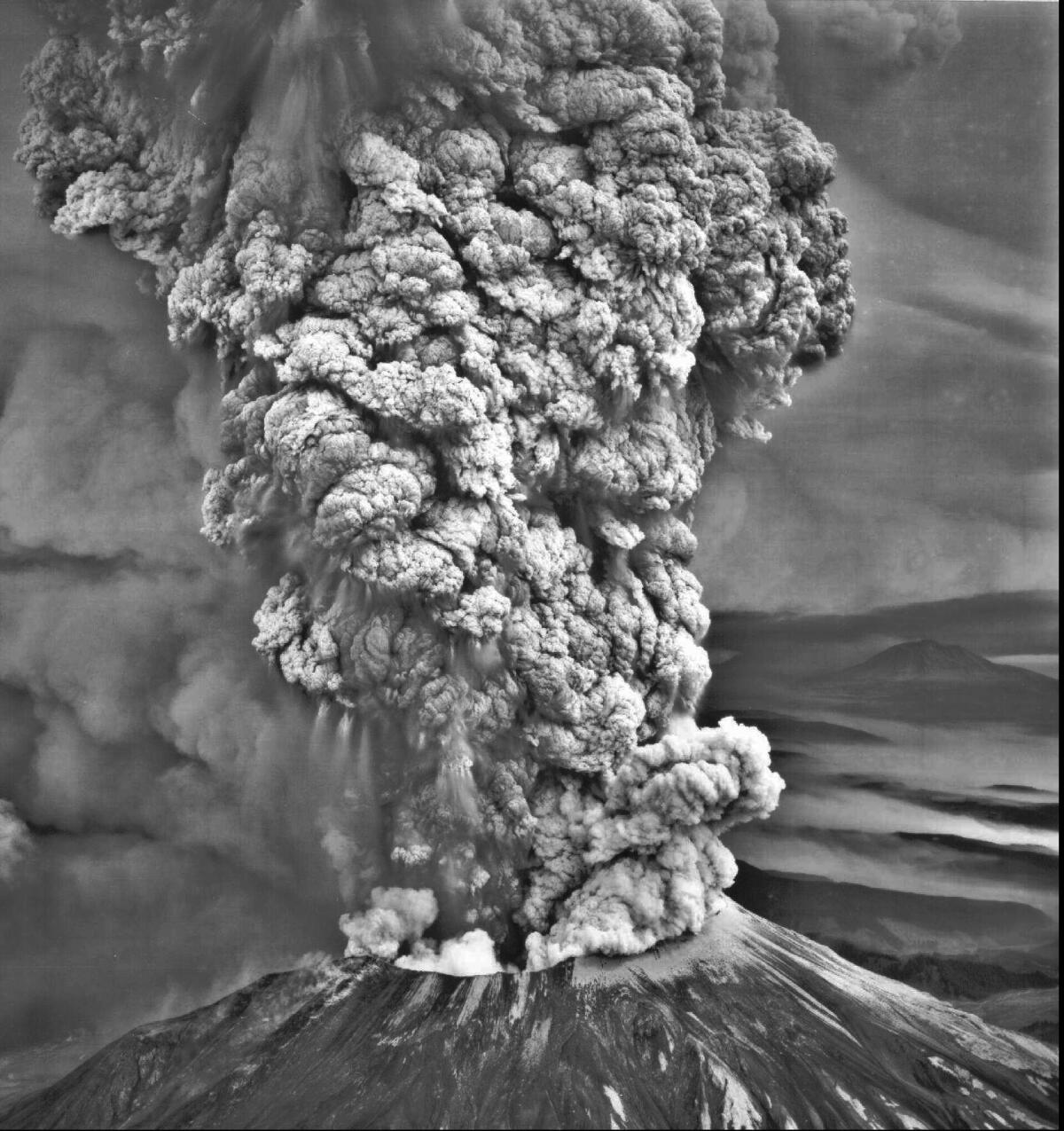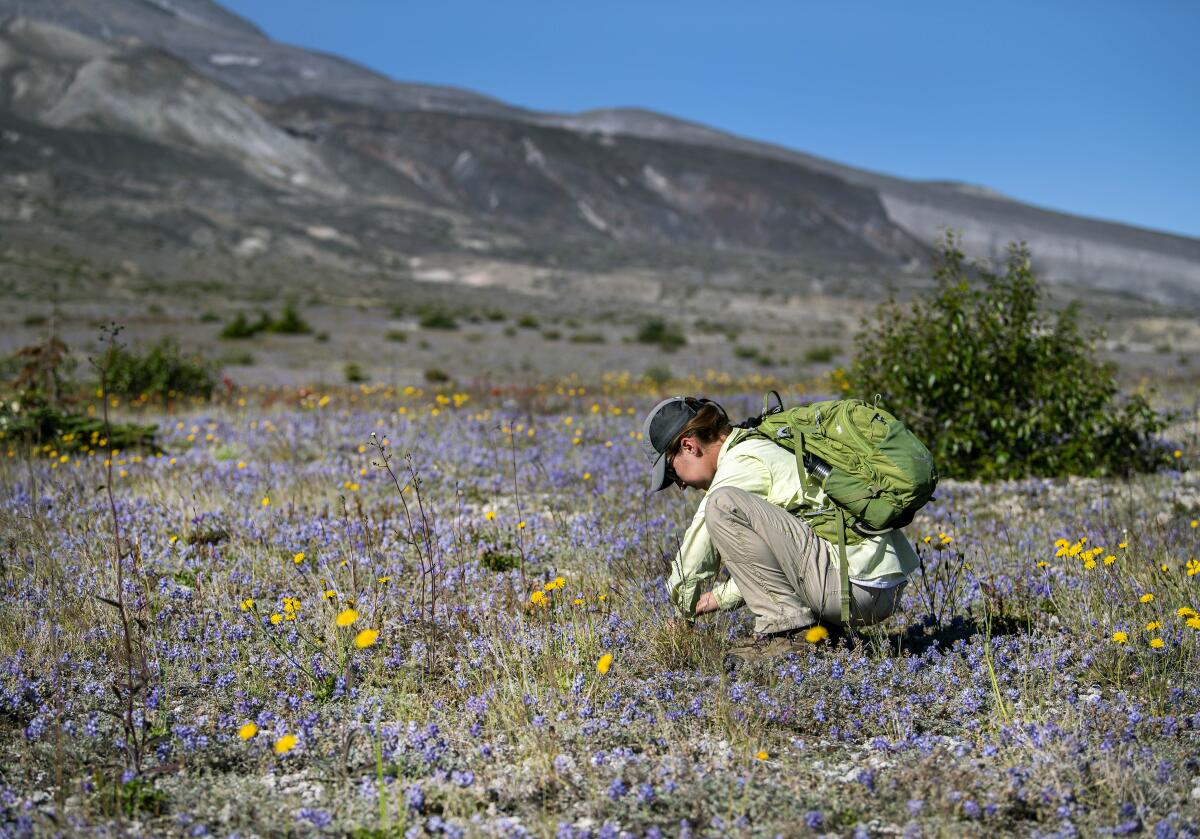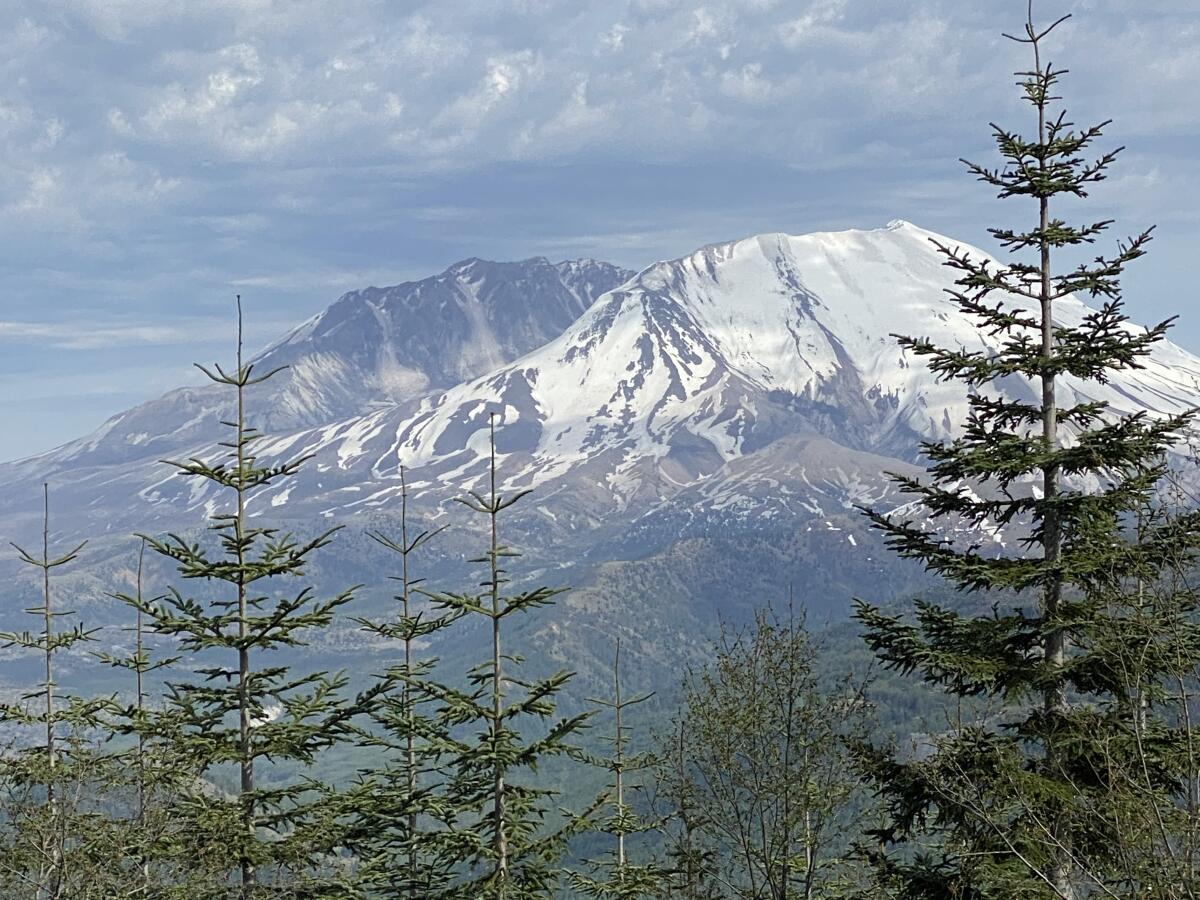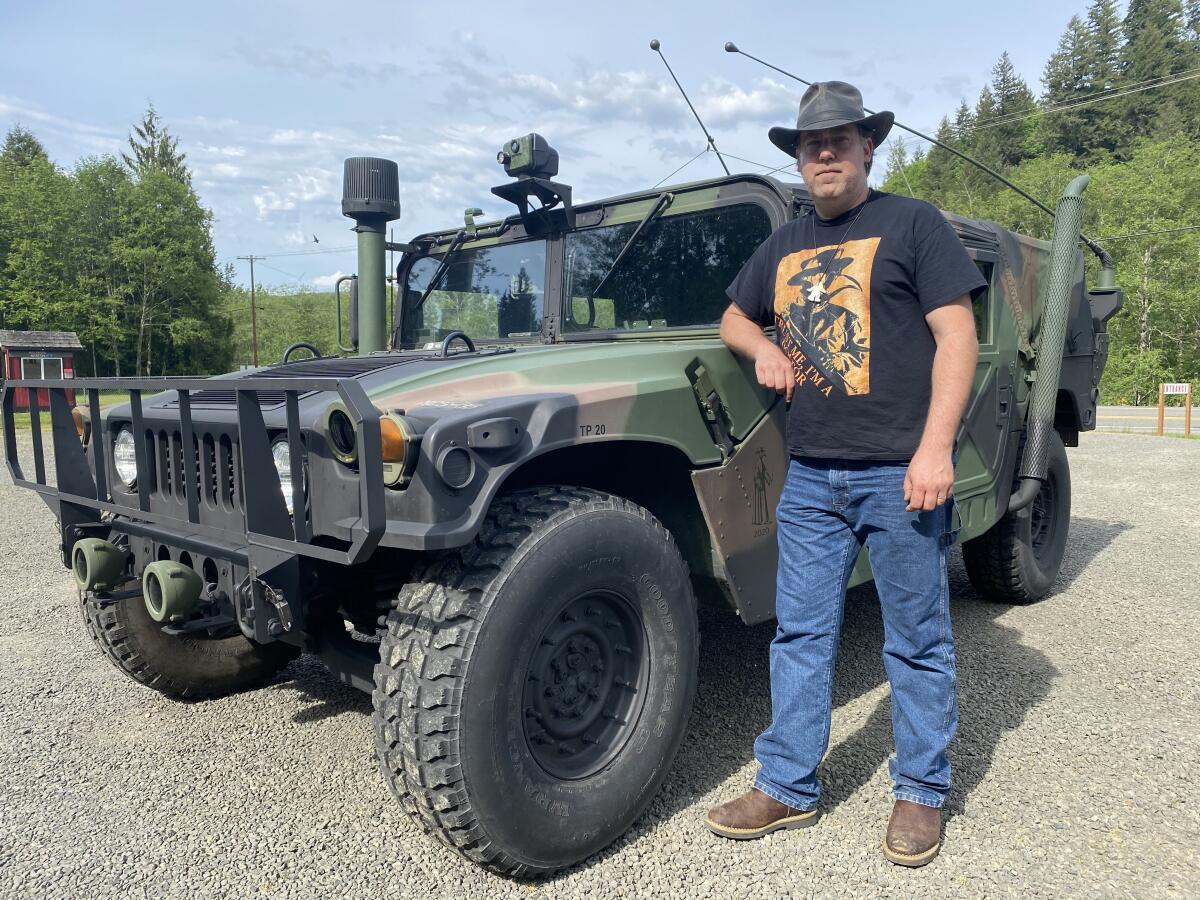40 years after its famed eruption, Mt. St. Helens looms as a marvel and a threat
- Share via
TOUTLE, Wash. — On the morning of May 18, 1980, an earthquake shook Mt. St. Helens and the mountain’s north face collapsed in one of the largest debris avalanches ever recorded.
The slide uncorked the volcano, baring magma that exploded with 500 times the force of the Hiroshima bomb in the most destructive eruption in U.S. history.
The cataclysmic chain of events killed 57 people and thousands of animals, took out 250 homes, 47 bridges and 185 miles of highway, clogged rivers with sediment, flooded valleys and blocked the Columbia River shipping channel.
Forty years later, the destruction may not be over.
The landslide remade Spirit Lake — once a beloved recreation spot at the volcano’s base — raising the lake bed by 200 feet and dumping debris that functions as a huge dam holding back 73 billion gallons of water.
U.S. Forest Service officials say the situation is precarious: The only relief valve for the 3-square-mile lake is a 1.6-mile drainage tunnel hurriedly built in 1985 and deformed repeatedly by faults and subsidence.
A breach is not thought to be imminent, but if it occurred the results would be disastrous.

Chris Strebig, Spirit Lake project manager for the Forest Service, said a massive surge of water, mud and debris could inundate cities below and disable four Columbia River ports: Longview, Vancouver and Kalama in Washington and the Port of Portland in Oregon.
“We are doing everything we can to make sure that never happens,” Strebig said. “It would be somewhat of a repeat of the 1980 mudslide that went downstream.”
The Forest Service proposes to drill into the debris to assess how much lake water the natural dam can safely restrain and how it might perform when the massive and long-predicted Cascadia earthquake finally strikes. A deteriorating cast iron gate at the tunnel entrance would be replaced with a safer double barrier.
None of that is especially controversial, given the potential catastrophe. A conflict, however, is coming to a head over another issue: how to bring workers and equipment into the remote section of the Mt. St. Helens National Volcanic Monument.
The Forest Service wants to build a temporary 3¼-mile road across the Pumice Plain, an area that was scoured by the landslide and eruption in 1980 but has since experienced a remarkable regeneration of plants and animals.
Researchers who study the area argue that helicopters could be used to ferry workers and equipment in order to preserve the fragile ecosystem.
The scientists describe the plain as a unique blank slate where they have watched nature recolonize.
“It’s an amazing area that people thought would take hundreds of years to recover, but it’s happened far faster than we thought,” said Carri LeRoy, an Evergreen State College freshwater ecologist studying watersheds that the road would bisect.

Charlie Crisafulli, a Pacific Northwest Research Station ecologist, said that when he began work in the blast area in July 1980, scientists expected that life would recolonize merely from the edges.
“Boy, how naive we were,” he said.
Northern pocket gophers — nocturnal creatures that survived underground when the volcano blew — emerged to build mounds, bringing up crucial carbon and nitrogen that helped plants to sprout.
Willow bushes grew, attracting songbirds and beavers that built ponds. Deer and elk returned. Nutrients flowed into Spirit Lake, supporting an aquatic ecosystem.
Once a steaming black stew full of uprooted trees and dead animals, the lake appears serene, dotted with thousands of logs. Researchers have discovered insect species that may exist nowhere else.
The scientists believe they have the law on their side. The 172-square-mile Mt. St. Helens National Volcanic Monument was established in 1982 under an act of Congress requiring managers to allow “geologic forces and ecological succession to continue substantially unimpeded.”
The monument’s centerpiece is the 8,366-foot mountain, which lost more than 1,300 feet from the eruption. The Johnston Ridge Observatory provides views of the exposed crater and a lava dome taller than the Seattle Space Needle.
People remember exactly what they were doing 10 years ago this May 18: getting ready for church, taking care of chores, sipping cups of coffee.
Jim Gawel, a University of Washington Tacoma environmental engineer who studies the lake, said that road construction would alter natural patterns of erosion and probably introduce invasive species via tires and tractor treads.
“If you start messing with that, it takes away the whole reason you created the monument,” he said.
Harry Romberg, a Sierra Club Washington chapter volunteer, said the Forest Service should have looked harder at transporting workers and equipment by helicopter.
Rebecca Hoffman, the Forest Service monument ranger, said helicopters were not feasible because the construction equipment was too big and the workers would need to travel to and from the lake too frequently.
“We all want research to continue, and it will continue,” Hoffman said. But she added that the act that created the monument also said that nothing would prevent the Forest Service from managing for public safety.
Forest Service managers have watched with concern as rain and snowmelt have raised the level of Spirit Lake during closures of the tunnel for repairs. They plan to use data from drilling the dam to help decide how to build an additional outlet that could be built as a backup to the tunnel.
If the managers decide to go ahead with the road after reviewing a final round of objections, and if opponents don’t sue, construction could begin next year. The multimillion-dollar project would take about two years.
For now, the monument is closed because of the coronavirus crisis. Visitors can drive only as far as highway viewpoints and look across the river below Spirit Lake to the mountain’s snowcapped summit.

Local hotels, restaurants and gift shops selling T-shirts and ash had been gearing up for tens of thousands of visitors for 40th anniversary programs and reunions of blast survivors and responders. Instead, the businesses are closed during Washington state’s lockdown, and volcanologists, artists, teachers and survivors will appear in online events.
Among those disappointed is Joe Bongiovanni, who owns a gift shop across Spirit Lake Highway from a site where 13 houses were swept away in 1980. Not only is he missing out on memorabilia sales, but he has suspended plans to begin taking customers on expeditions furthering his true passion: Sasquatch research.

He recently restored a Humvee and fitted it with surveillance gear, including dashboard-mounted thermal monitors that he believes could detect ape-like creatures said to inhabit Pacific Northwest forests.
Bongiovanni said that people can choose whether or not to to believe in Bigfoot. But when the Cascadia earthquake hits, he said, no one should doubt the need to run for higher ground, given the undeniable specter of Spirit Lake.
“Our personal belongings would no longer exist,” he said. “But what else do you need other than your neck?”
More to Read
Sign up for Essential California
The most important California stories and recommendations in your inbox every morning.
You may occasionally receive promotional content from the Los Angeles Times.











